VALENTINE’S DAY AT RIO
Rio de Los Angeles Test Plot
DATE: February 14 2023
The rain came early this year and the test plots are loving it. The weeds around the plots are lush and green, starting to encroach on the plot area. Encelia californica and Sphaeralcea ambigua are in bloom.
Rio de Los Angeles Test Plot
By Daniela Velazco
Test Plot Intern
Test Plot Intern
DATE: February 14 2023
The rain came early this year and the test plots are loving it. The weeds around the plots are lush and green, starting to encroach on the plot area. Encelia californica and Sphaeralcea ambigua are in bloom.

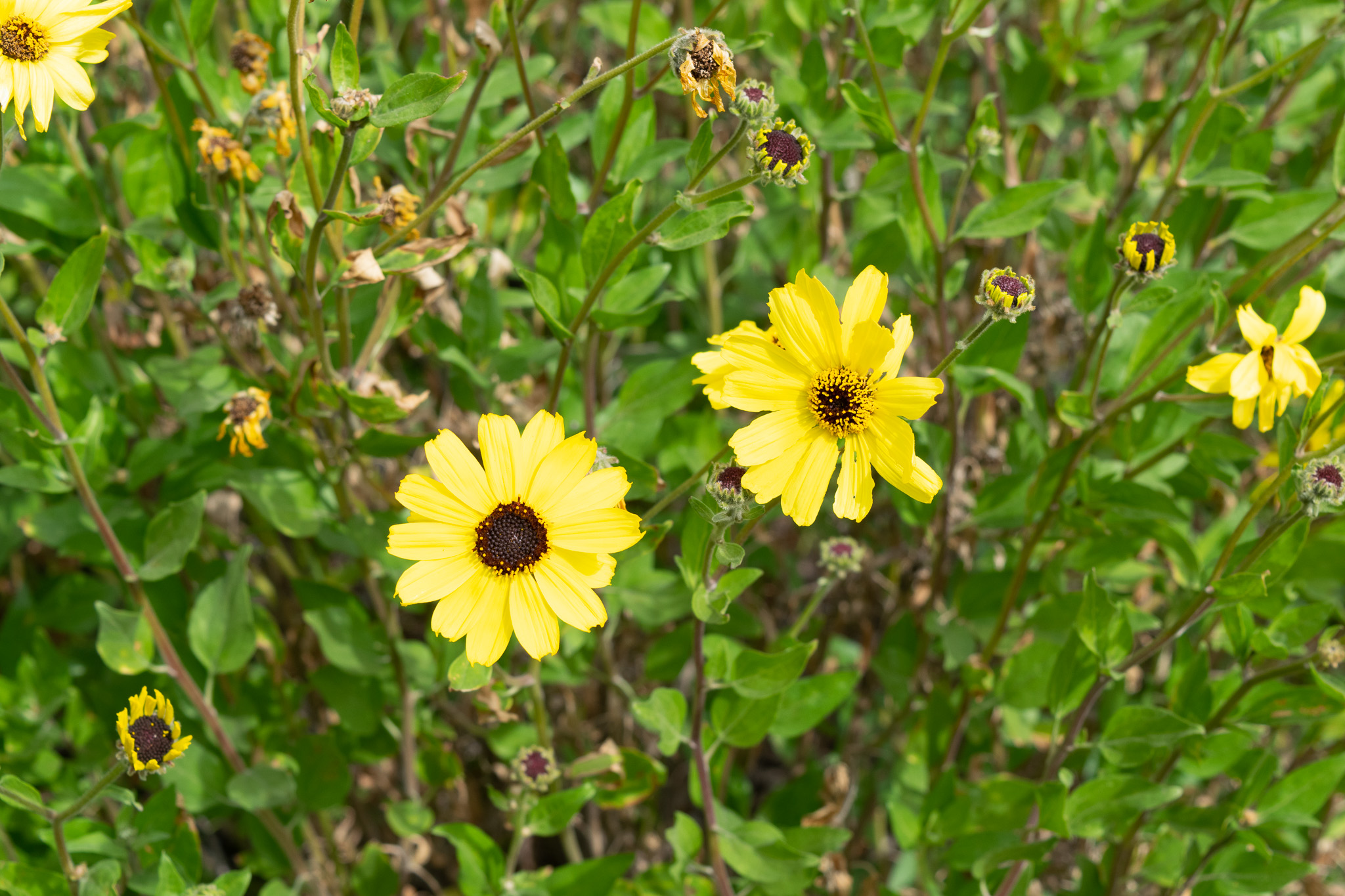

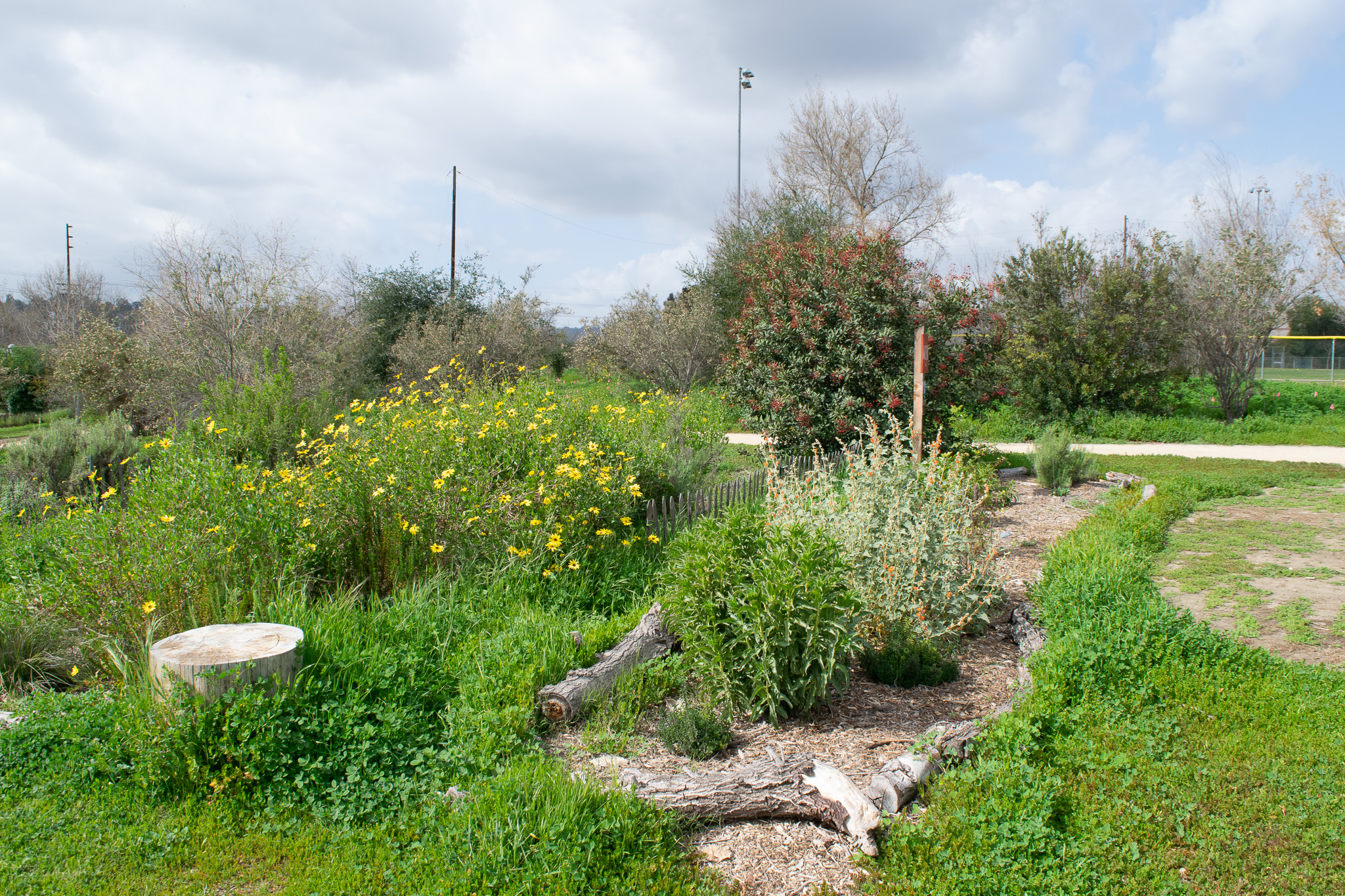

FIELD NOTES
Rio Update
Rio Update
By Daniela Velazco
Test Plot Intern
Test Plot Intern
DATE: October 22 2022
Nina and I met up at the Test Plots to monitor the existing species and create labels for plants when necessary. We met at 10am on a Sunday. The log borders are working well as a way to differeniate the plots from the path. It seems that the most successful plots have a thick 3-5” layer of mulch.
While going through and taking note of successful species two park visitors came up to us and told us they were volunteers and a part of the larger recent natives planting at Rio. The area around the test plots had 50-100 new young sprouts that were planted.
One of the volunteers mentioned noticing what seemed like a pest growing on one of the oak tree saplings. She remarked how much she loved the species and knew how long they take to grow, so she wanted to keep an eye on it to give it the best chance possible. We walked over and saw a red beetle and white substance underneath the oak leaves (eggs, fungus, foam?). We took pictures and notified the Parks Coordinator. We then completed our assessment of the plots and infilled metal labels in areas that needed it most. We were at the park for around an hour.
Nina and I met up at the Test Plots to monitor the existing species and create labels for plants when necessary. We met at 10am on a Sunday. The log borders are working well as a way to differeniate the plots from the path. It seems that the most successful plots have a thick 3-5” layer of mulch.
While going through and taking note of successful species two park visitors came up to us and told us they were volunteers and a part of the larger recent natives planting at Rio. The area around the test plots had 50-100 new young sprouts that were planted.
One of the volunteers mentioned noticing what seemed like a pest growing on one of the oak tree saplings. She remarked how much she loved the species and knew how long they take to grow, so she wanted to keep an eye on it to give it the best chance possible. We walked over and saw a red beetle and white substance underneath the oak leaves (eggs, fungus, foam?). We took pictures and notified the Parks Coordinator. We then completed our assessment of the plots and infilled metal labels in areas that needed it most. We were at the park for around an hour.
Weather
High of 72, Low of 59 degrees
We received the first sprinkle of rain earlier this month, Prior to that it has not rained since April, which is typical of our summer dry climate.
Tests
The seeded only plots are visibly different from the plots planted with 1-5 gallon plants. Not as variety visible in the fall with the seeded plots. This could be due to the seeded species being mostly annual wildflowers. Check plantlist to vertify hypothesis.
How are the plants doing?
The plants look good, none are visibly in distress. Many of the plants have gone to seed or fruit. California Buckwheat provides a nice color through its seeds to compliment the evergreens in the Fall. After monitoring the test plots for two years we’ve noticed certain species are thriving
Successful species:
Future Activities
Note spontaneous growth in the Spring. Many of the species have grown for 2 years, infill planting to fill in the gaps as next steps
High of 72, Low of 59 degrees
We received the first sprinkle of rain earlier this month, Prior to that it has not rained since April, which is typical of our summer dry climate.
Tests
The seeded only plots are visibly different from the plots planted with 1-5 gallon plants. Not as variety visible in the fall with the seeded plots. This could be due to the seeded species being mostly annual wildflowers. Check plantlist to vertify hypothesis.
How are the plants doing?
The plants look good, none are visibly in distress. Many of the plants have gone to seed or fruit. California Buckwheat provides a nice color through its seeds to compliment the evergreens in the Fall. After monitoring the test plots for two years we’ve noticed certain species are thriving
Successful species:
- Eriogonum fasciculatum - California Buckwheat
- Isocoma menziesii - Menzies' Goldenbush
- Baccharis pilularis - Coyotebrush
- Asclepias fascicularis - Narrowleaf milkweed
- Muhlenbergia rigens - Deergrass
- Sphaeralcea ambigua var. Rugosa - Apricot Mallow
Future Activities
Note spontaneous growth in the Spring. Many of the species have grown for 2 years, infill planting to fill in the gaps as next steps
- Mulch beds with depleted mulch layer. 3-5” thick layer of wood chip mulch is optimal.
- Replace labels and provide labels for all plants
- (Tongva, English, Botanical names)
- Can this be done before the Oct 17th?
- Update “What is Planted Here” laminated sheets
- Make this signage more visible
- Increase vegetation density
- Increase variety of species
- Struggling species
- Penstemon spectabilis (Showy Penstemon)
RIO AFTER 2 YEARS
DATE: October 06 2022
The Rio plots were planted in the Fall of 2020. A class of landscape architecture students partnered with CA State Parks and a local group the Abuelas de Rio. After two years, we wanted to share some reflections on how they are doing and what we have learned.
Q&A with Jen Toy
Test Plot Lead, USC Lecturer
Test Plot Lead, USC Lecturer
DATE: October 06 2022
The Rio plots were planted in the Fall of 2020. A class of landscape architecture students partnered with CA State Parks and a local group the Abuelas de Rio. After two years, we wanted to share some reflections on how they are doing and what we have learned.
Q: Can we replicate Test Plots in other places?
Yes! our 2nd location at Rio has been very successful. It’s been a completely different process, site and community than at Elysian, so that is very exciting and we’ve learned a ton. For example, the site prep needed to change because Rio is urban fill as a former railyard (as opposed to the naturalized areas of Elysian). The Grow/kill strategy to flush out the weeds was not very successful at Rio b/c the ground was so compacted. We ended up removing bermuda grass, thistle, etc with pickaxes.
Q: What are your key lessons learned so far?
What challenges have you faced?
Yes! our 2nd location at Rio has been very successful. It’s been a completely different process, site and community than at Elysian, so that is very exciting and we’ve learned a ton. For example, the site prep needed to change because Rio is urban fill as a former railyard (as opposed to the naturalized areas of Elysian). The Grow/kill strategy to flush out the weeds was not very successful at Rio b/c the ground was so compacted. We ended up removing bermuda grass, thistle, etc with pickaxes.
Q: How did you adapt for different community needs?
- At Rio we work with a group of elderly Spanish speaking abuelas - with no email or social media. They come to the park in the morning for a walk and some gardening. It was difficult during the pandemic, but we’ve started to create a weekly time to meet on Monday mornings that is organized by Luis Rincon, a community engagement coordinator who works for CA State Parks.
-
This site is also much sunnier and exposed and requires meeting earlier in the morning during the summer.
Q: What are your key lessons learned so far?
- Pioneer species taking off (Isocoma menziesii-- Goldenbush, Encelia californica -- CA Bush Sunflower).
- For the seed only plot, in the first year, seedlings of chia, black sage, lupines, buckwheat and annual wildflowers were present - from a mix that Theodore Payne made for us based on the historical riparian ecology. In 2nd year, the seed only plot was composed largely of Buckwheat (Eriogonum fasciculatum).
- Seed/plant combo plots more successful than seed only or plant only.
- Sheet mulch and thick layer of mulch (4-6”) has been effective at suppressing Bermuda grass, but it can still creep in from plot edges
What challenges have you faced?
- We watered almost every week for the 1st year (maybe too much? Huge growth quickly and found scale on some plants like Malosma)
-
Baby oak and walnut trees (not in plots) died b/c not watered / trampled. Need better cues.


TANIA ROMERO,
LOS ANGELES SUPER STEWARD
Rio de los Angeles
By Hannah Flynn & Daniela Velazco
former Test Plot interns
![]()
LOS ANGELES SUPER STEWARD
Rio de los Angeles
By Hannah Flynn & Daniela Velazco
former Test Plot interns


We met Tania Romero at the Rio de Los Angeles State Park Test Plot on a sunny spring day. While Tania played an important role in shaping the plant palette for the naturalized portion of the park, our conversation with her focused on a different subject; who makes up arguably one of the biggest groups of the park’s users: the birds. When developing the plant palette, Tania researched what plant and bird species could be found within a 5-mile radius of the park, and went from there.
Tania works as an environmental consultant, performing bird surveys for electrical pole replacement operations, making sure that a pole due for maintenance is not the current home of nesting birds or any species with special status. The beauty of consulting, she explains, is its flexibility: while she’s “more of a bird person”, she also gets to learn about mammals and plants, and how they all fit into the whole picture.

Tania has always been curious about how the whole picture comes together. Growing up in South Central, there wasn’t much nature around, she recounted. Her mom believed nature was important to experience, so many of her foundational childhood experiences involved trips to places like Pasadena and Azusa, to experience the mountains and rivers. Once, on a trip to the San Diego Zoo, Tania saw a monkey climb on a hippo’s back. This small interaction grew into a bigger curiosity in college - why do animals behave the way they do?
In the outdoors and conservation field in general, Tania always felt like an outsider. She often found herself reflecting on her childhood experience and questioning “Why was there limited green space and nature where she was raised in south central Los Angeles?“ As she got deeper into her studies, she came across environmental racism and began to understand why. She also found herself dwelling further into social justice including worker’s rights, gender and sexuality issues, and racism. Although she had a passion for conservation, she found herself questioning how she focused on conservation when there were multiple other social issues that impacted her everyday life and her community.

Currently, Tania runs a bird banding station at Bear Divide, in the foothills of the Angeles National Forest. Accessible only by car, the station is anything but immediately located for most people and station visitors. The greater Bear Divide area is used by dedicated birders and hikers. For many of people visiting the station, it is their first time touching birds or seeing them up close. Her long-term dream is to open a bird observatory that balances community and research.
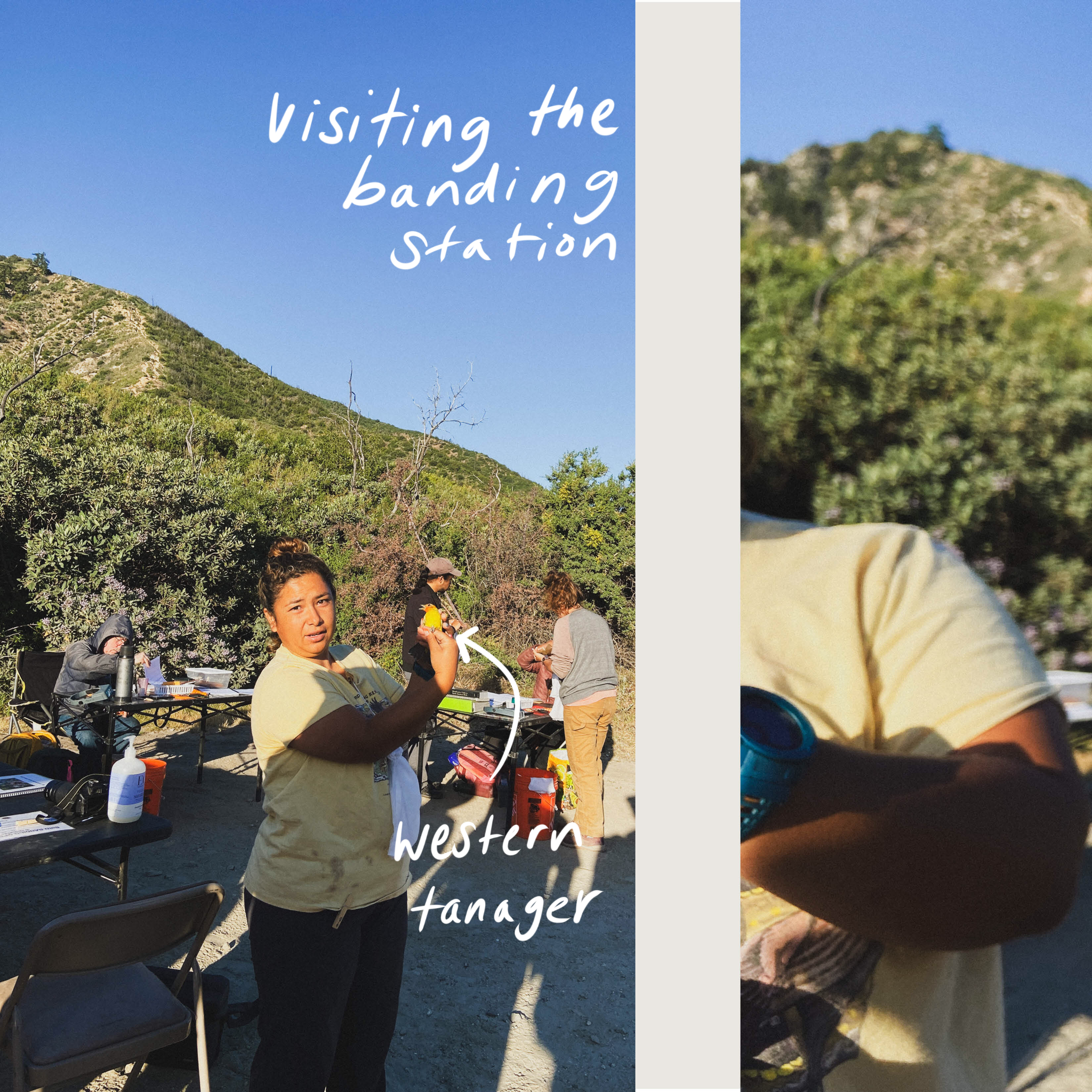
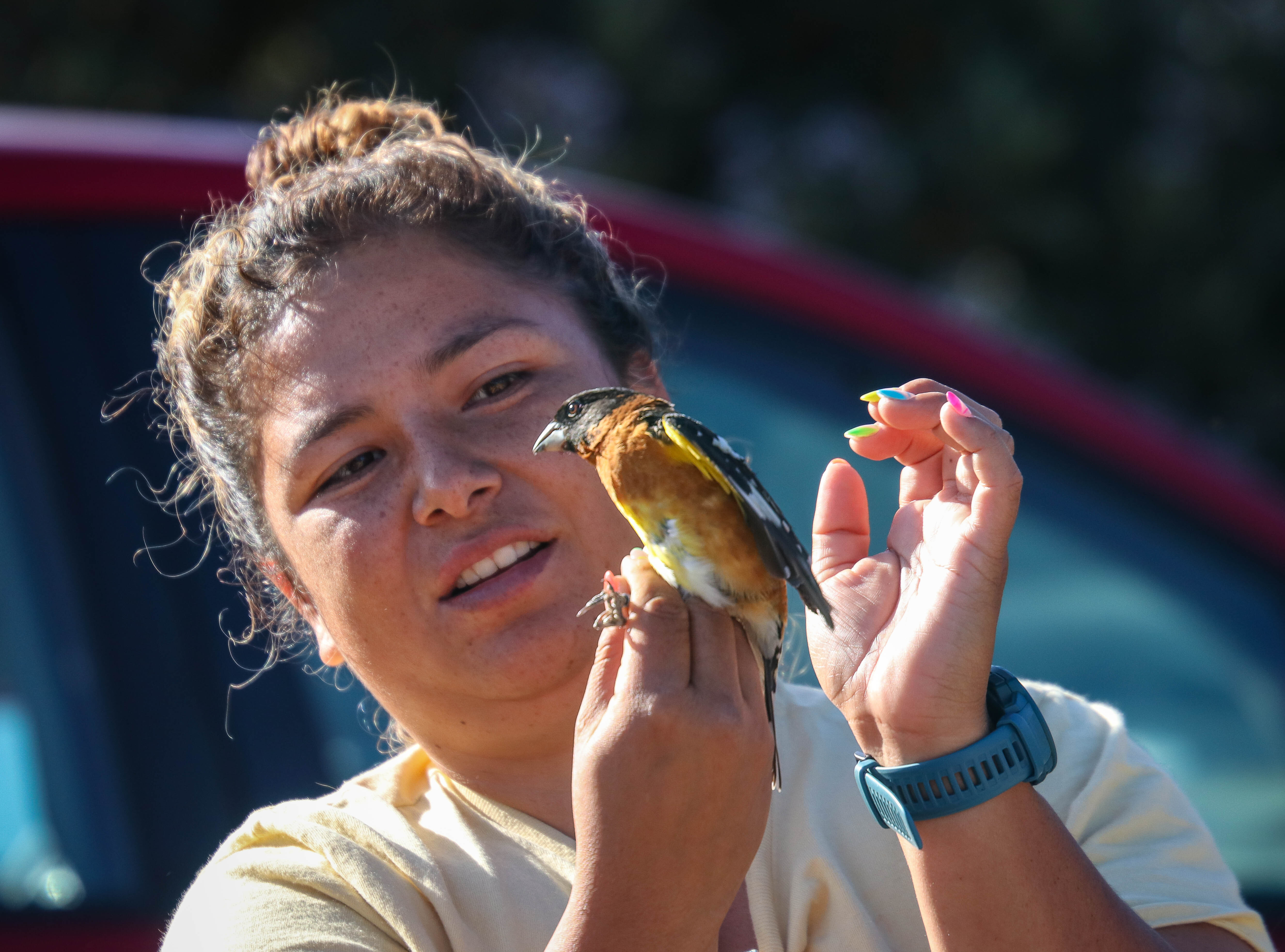
Balancing community and science is a challenge, she tells us, as people often underestimate the work that goes into building a sense of stewardship. Building a relationship with volunteers and the community should be intentional. For example, for restoration events that require volunteers, we should ask “ Why should someone volunteer at this event and work this land?” Tania suggests reaching out to local partnerships that are already involved in the community or within the community such as community partners and schools, to build mutual understanding and deliver a message with a foundation of trust and understanding. Building trust however is work, often becomes an afterthought, and is reduced to posting a flier in hopes that the right people will see it. Or worse, she explains: as a person of color, employers will expect her to “know diversity” and will throw inclusion work to her even when it is not part of her job card.
But to take the effort to engage people - to understand their wants and needs, and to teach them how they relate to nature - is absolutely worth it, she explains. One of the most validating experiences is when volunteers show up, especially repeatedly, because then it’s clear that the work means something to everyone involved. Her goal is to branch out of common narratives of conservation, to value and incorporate new narratives and new sources of knowledge when it comes to restoration work. By incorporating new narratives and accepting new experiences, we become more inclusive of everyone in the community. One example in restoration work is including the stories of gardeners, farmers, and Indigenous people who know so much about how the land works - but because they may not have the specific vocabulary associated with restoration work, their knowledge is overlooked.

Not only does Tania hope that this evolving model of restoration and stewardship will become more and more prevalent - she is actively working to make it happen. When asked who she would like to share her restoration work with, her answer looked towards the past: she would want to share it with her grandmother, who passed away when Tania was 10 years old. Tania’s family members in Mexico have told her that her grandmother was just like her - she loved birds and bright colors. She would want to share this understanding with her grandmother, and maybe gain some understanding in return - about how we have built this passion and love in our veins.
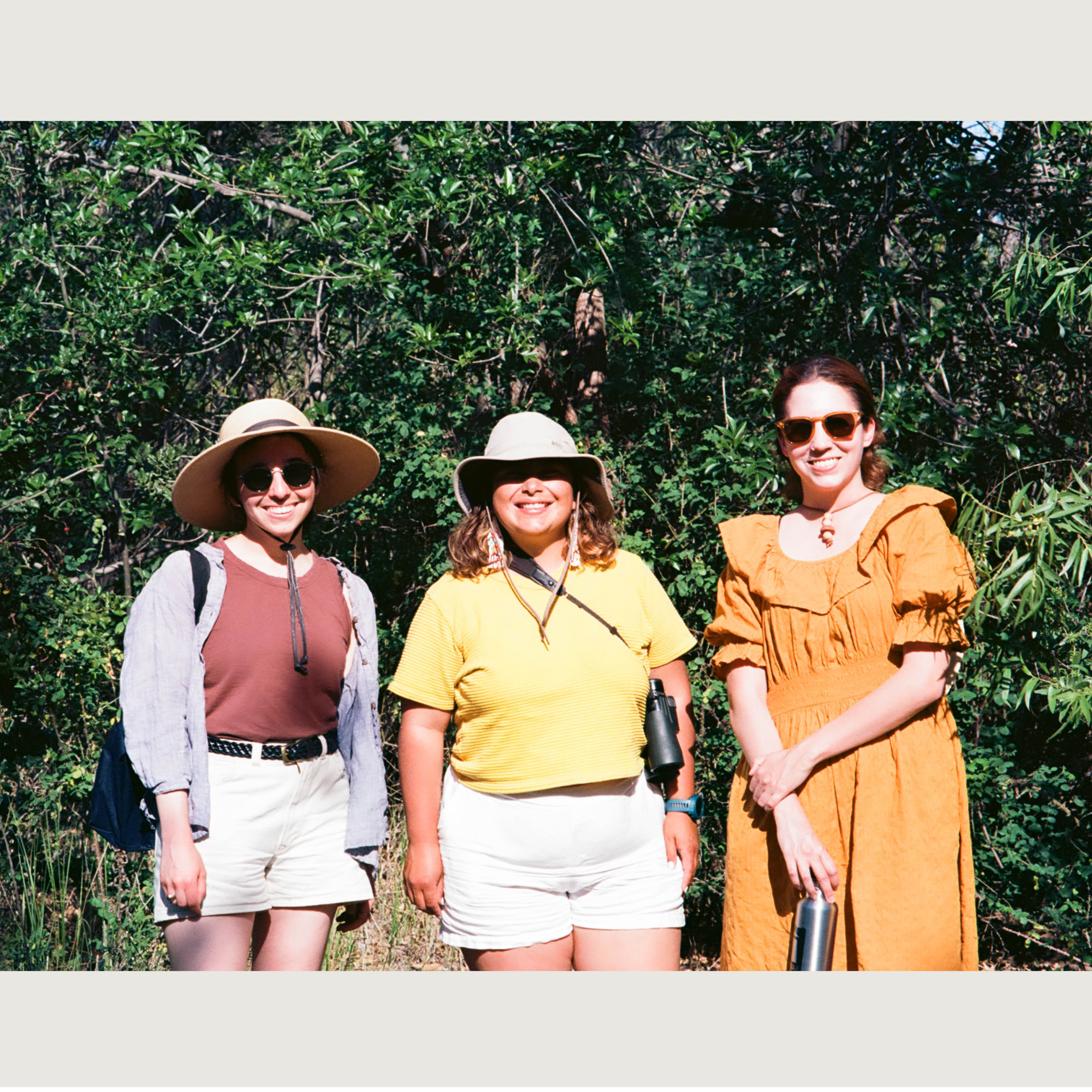 Thanks so much for sharing your story with us Tania!
Thanks so much for sharing your story with us Tania! Photos by the talented Robert Flynn
LUIS RINCON, SUPER STEWARD
Rio de Los Angeles State Park
By Hannah Flynn & Dani Velazco
current and former Test Plot interns
Starting in early 2022, we conducted a series of seven interviews with “Super Stewards” - members of the Test Plot community who are stewards of community and of the environment. Our conversations covered personal histories, what it means to be a steward, and what the future of community-tended green space can be.
![]()
![Meet Luis Rincon, State Parks Community Engagement Coordinator]() Photos by Robert Flynn
Photos by Robert Flynn
Rio de Los Angeles State Park wasn’t always a park. For a long time, it was part of the Los Angeles River floodplain and agricultural fields. That is, until the massive Taylor Yard rail yard was constructed, roughly coinciding with the concretization of the Los Angeles River. It was operated as a rail yard until 1985, when it closed operations. To learn the story of how Rio became a park, we met with Luis Rincon, State Parks Community Engagement Coordinator, on an unusually warm and sunny winter day. We sat down together near the Test Plot, in the grass, soaking up the sun. According to Luis, the abuelas del Rio, longtime residents of the neighborhood and park volunteers, are to thank for their dedicated advocacy work to turn the brownfield into a park for their grandchildren to play.
The location was perfect: because of its proximity to the river, it could connect kids to the river, its ecology, and its part of the city’s history. The abuelas found an opportunity with California State Parks to turn this parcel of land into a park because of its significant natural value as a riparian zone. However, the abuelas and other community groups also wanted to have soccer fields and basketball courts, which State Parks does not administer, so the park is run as a partnership between the City of Los Angeles and State Parks.
Luis noted that on the administrative side, State Parks was keenly aware of a statewide relevancy problem: the people visiting their parks didn’t reflect the rich diversity of the state. The advocacy work of the abuelas aligned perfectly with State Parks’s own initiative to build more urban parks to “bring parks to the people.” As Luis started with State Parks, he was drawn to Rio because of the abuelas’ passion and vision of green space for their community. Getting to meet them and work with them was inspiring. “I remember when I first got here, everything in the landscape was small,” he recounted, underscored by the dappled shade provided by the now-mature toyon we sat beneath.
A native Angeleno himself, his connection to the outdoors began with family camping trips up near Yosemite. One of his earliest memories was jumping on a log and falling into a creek, a memory he associates with happy senses of freedom and being with family. Growing up in Northeast LA, Luis served as a community ambassador as part of a program called the Conservation Career Development Program (CCDP), a Student Conservation Association (SCA) program serving inner-city youth. Wanting to give back to his community, he switched to social work following college graduation. Eventually, he came to the realization that while social work was important and effective, community health is inextricably linked to open, green space, which brought him back to working with nature. And while situated in an urban setting, Rio’s 20 acres of nature is just enough to provide human health benefits and habitat benefits, such as creating habitat for an endangered bird, the Least Bell’s Vireo.
Working as an Community Engagement Coordinator for State Parks, Luis is able to build community and expand who gets to benefit from access to nature. He insists that he can’t do it alone, that it’s “always about finding the right partners who have aligned thinking.” Through partnerships with organizations such as the Audubon Society and Test Plot, he’s able to organize more resources for the community, in turn strengthening the community’s relationship with the park. “It’s not just about parks, it’s about the people. The abuelas didn’t know that they would set 100 acres [as in the 100 Acre Partnership] in motion in Los Angeles where real estate is at a premium…it is always about just taking that first step.” The abuelas could not have imagined the long-term impacts to the nation’s second-largest city that their green advocacy work catalyzed.
Rio de Los Angeles State Park
By Hannah Flynn & Dani Velazco
current and former Test Plot interns
Starting in early 2022, we conducted a series of seven interviews with “Super Stewards” - members of the Test Plot community who are stewards of community and of the environment. Our conversations covered personal histories, what it means to be a steward, and what the future of community-tended green space can be.

 Photos by Robert Flynn
Photos by Robert FlynnRio de Los Angeles State Park wasn’t always a park. For a long time, it was part of the Los Angeles River floodplain and agricultural fields. That is, until the massive Taylor Yard rail yard was constructed, roughly coinciding with the concretization of the Los Angeles River. It was operated as a rail yard until 1985, when it closed operations. To learn the story of how Rio became a park, we met with Luis Rincon, State Parks Community Engagement Coordinator, on an unusually warm and sunny winter day. We sat down together near the Test Plot, in the grass, soaking up the sun. According to Luis, the abuelas del Rio, longtime residents of the neighborhood and park volunteers, are to thank for their dedicated advocacy work to turn the brownfield into a park for their grandchildren to play.
The location was perfect: because of its proximity to the river, it could connect kids to the river, its ecology, and its part of the city’s history. The abuelas found an opportunity with California State Parks to turn this parcel of land into a park because of its significant natural value as a riparian zone. However, the abuelas and other community groups also wanted to have soccer fields and basketball courts, which State Parks does not administer, so the park is run as a partnership between the City of Los Angeles and State Parks.
Luis noted that on the administrative side, State Parks was keenly aware of a statewide relevancy problem: the people visiting their parks didn’t reflect the rich diversity of the state. The advocacy work of the abuelas aligned perfectly with State Parks’s own initiative to build more urban parks to “bring parks to the people.” As Luis started with State Parks, he was drawn to Rio because of the abuelas’ passion and vision of green space for their community. Getting to meet them and work with them was inspiring. “I remember when I first got here, everything in the landscape was small,” he recounted, underscored by the dappled shade provided by the now-mature toyon we sat beneath.
A native Angeleno himself, his connection to the outdoors began with family camping trips up near Yosemite. One of his earliest memories was jumping on a log and falling into a creek, a memory he associates with happy senses of freedom and being with family. Growing up in Northeast LA, Luis served as a community ambassador as part of a program called the Conservation Career Development Program (CCDP), a Student Conservation Association (SCA) program serving inner-city youth. Wanting to give back to his community, he switched to social work following college graduation. Eventually, he came to the realization that while social work was important and effective, community health is inextricably linked to open, green space, which brought him back to working with nature. And while situated in an urban setting, Rio’s 20 acres of nature is just enough to provide human health benefits and habitat benefits, such as creating habitat for an endangered bird, the Least Bell’s Vireo.
Working as an Community Engagement Coordinator for State Parks, Luis is able to build community and expand who gets to benefit from access to nature. He insists that he can’t do it alone, that it’s “always about finding the right partners who have aligned thinking.” Through partnerships with organizations such as the Audubon Society and Test Plot, he’s able to organize more resources for the community, in turn strengthening the community’s relationship with the park. “It’s not just about parks, it’s about the people. The abuelas didn’t know that they would set 100 acres [as in the 100 Acre Partnership] in motion in Los Angeles where real estate is at a premium…it is always about just taking that first step.” The abuelas could not have imagined the long-term impacts to the nation’s second-largest city that their green advocacy work catalyzed.
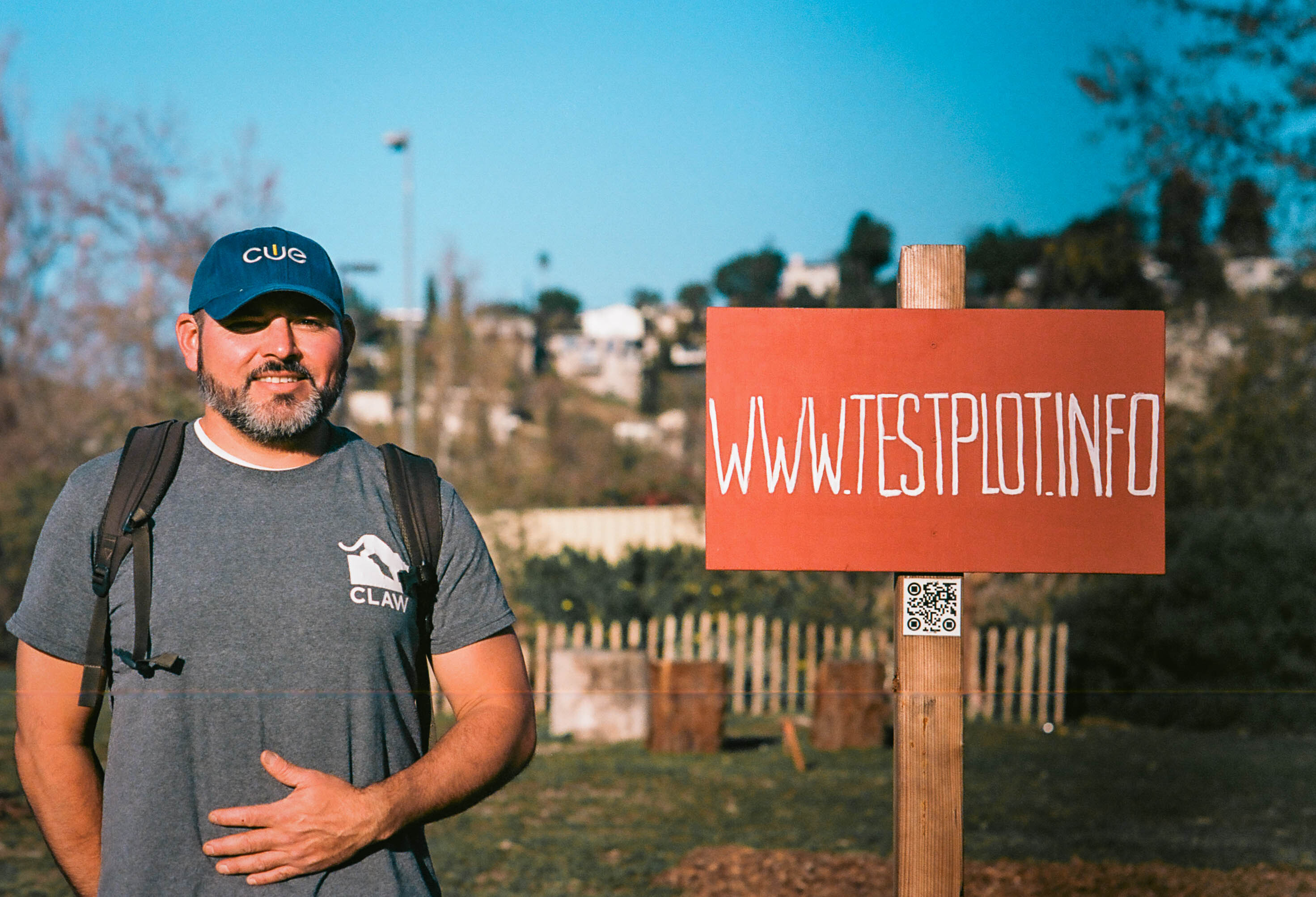


Thank you so much for sharing your time and experience with us, Luis!
